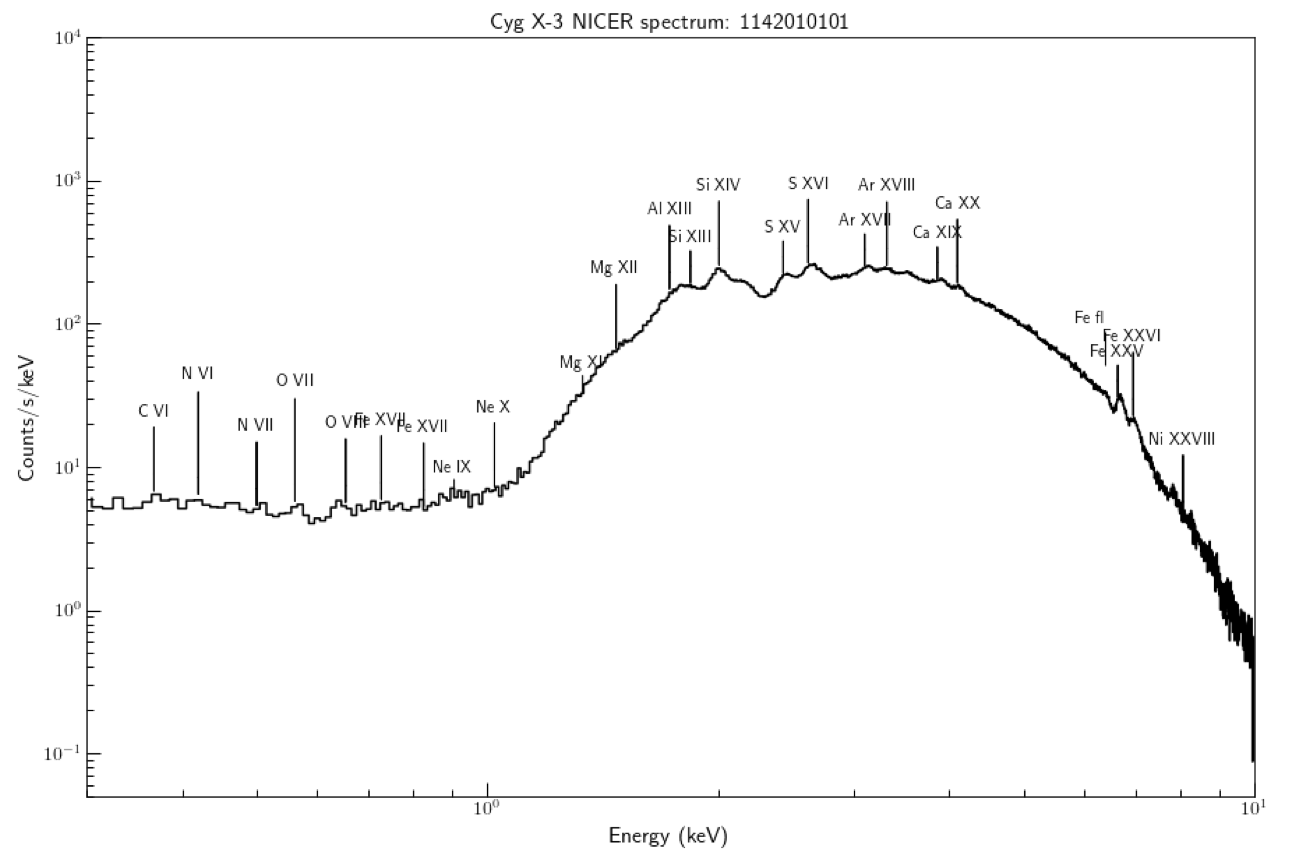NICER / ISS Science Nugget for July 19, 2018NICER Observations of Cygnus X-3Cyg X-3 is one of the most intrinsically luminous X-ray binaries in the Galaxy, consisting of a high-mass star in orbit with, and feeding material to, an accreting compact object (likely a black hole although a neutron star is also possible). On June 29th, the Italian Space Agency's AGILE gamma-ray telescope detected enhanced gamma-ray emission from Cyg X-3. Beginning July 3rd, NICER performed several observations, with early results reported in Astronomers Telegram #11821. NICER initially observed the source at a count rate of 345 XTI counts/s, declining to 270 XTI counts/s within 38 minutes. The NICER observations show orbit-phase-dependent variability of approximately a factor of 4 in count rate, from a maximum of 1069 counts/s to a minimum of 252 counts/s as the binary system follows its ~4.8 hour period. The spectrum shows significant line emission, especially between 1 and 7 keV. The spectrum can be simply approximated by a combination of an absorbed power-law plus an absorbed thermal emission component. Sulfur line emission near 2.6 keV is particularly strong, and the spectrum also shows prominent emission from the iron K-shell complex near 6.7 keV. The power-law component has a photon index of approximately 1.2 with a column density of about 8 x 1022 cm-2. The thermal component has a temperature of 1–2 keV, with a somewhat lower column (about 4 x 1022 cm-2). The initial NICER observation had a flux of 8.4 x 10-9 ergs/cm2/s in the 0.4–12 keV band. A power spectrum of a portion of the initial NICER observation indicates the appearance of a transient quasi-periodic oscillation (QPO) near 140 Hz at 4-sigma significance; QPOs, especially at high frequency, are of interest because they are thought to trace flows in the innermost regions of accretion disks, where relativistic gravity effects are most important. (The QPO was not, however, reliably detected again in subsequent observations.) Historically, gamma-ray flaring such as the June AGILE detection is followed some days later by strong flaring at radio frequencies, likely tied to the emission of powerful jets from the accreting object. NICER continues to monitor Cyg X-3 approximately daily, to track for the first time with high sensitivity in X-rays the evolution of the system between the gamma-ray and radio flares. NICER
|



